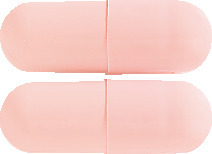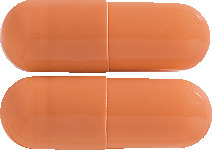SUMMARY CMI
GAMINE XR
Consumer Medicine Information (CMI) summary
The full CMI on the next page has more details. If you are worried about using this medicine, speak to your doctor or pharmacist.
1. Why am I using GAMINE XR?
GAMINE XR contains the active ingredient galantamine hydrobromide. GAMINE XR is used to treat mild to moderately severe dementia of the Alzheimer's type.
For more information, see Section 1. Why am I using GAMINE XR? in the full CMI.
2. What should I know before I use GAMINE XR?
Do not use if you have ever had an allergic reaction to galantamine hydrobromide or any of the ingredients listed at the end of the CMI.
Talk to your doctor if you have any other medical conditions, take any other medicines, or are pregnant or plan to become pregnant or are breastfeeding.
For more information, see Section 2. What should I know before I use GAMINE XR? in the full CMI.
3. What if I am taking other medicines?
Some medicines may interfere with GAMINE XR and affect how it works.
A list of these medicines is in Section 3. What if I am taking other medicines? in the full CMI.
4. How do I use GAMINE XR?
GAMINE XR modified release capsules should be taken once a day, preferably with food. Be sure to drink plenty of liquids during your treatments to keep yourself hydrated. The capsule must be swallowed whole. The contents should not be crushed or sprinkled on food.
More instructions can be found in Section 4. How do I use GAMINE XR? in the full CMI.
5. What should I know while using GAMINE XR?
| Things you should do |
|
| Things you should not do |
|
| Driving or using machines |
|
| Drinking alcohol |
|
| Looking after your medicine |
|
For more information, see Section 5. What should I know while using GAMINE XR? in the full CMI.
6. Are there any side effects?
Nausea, vomiting, diarrhea, stomach pain or discomfort, indigestion, difficulty swallowing, weakness, muscle cramps, numbness and tingling that begins in the lower extremities, leg camps, tingling in the hand or feet, ringing in the ears, runny or blocked nose, dehydration (sometimes severe), thirst, lack of fluids, hallucinations, mood changes such as agitation or aggressive feelings, feeling depressed or having thoughts of harming yourself, dizziness, light-headedness, slow, fast or irregular heartbeat, high blood pressure, yellowing of the skin and eyes, increased sweating, fever, trembling or shakiness, loss of appetite, weight loss, drowsiness, tiredness, weakness, feeling unwell, confusion, visual disturbances, trouble sleeping, headache, fits (seizures), pain or tightness in the chest, skin rashes or hives, swelling of the face, lips, tongue or other parts of the body wheezing or difficulty breathing, fainting.
For more information, including what to do if you have any side effects, see Section 6. Are there any side effects? in the full CMI.
FULL CMI
GAMINE XR
Active ingredient(s): galantamine hydrobromide
Consumer Medicine Information (CMI)
This leaflet provides important information about using GAMINE XR. You should also speak to your doctor or pharmacist if you would like further information or if you have any concerns or questions about using GAMINE XR.
Where to find information in this leaflet:
1. Why am I using GAMINE XR?
2. What should I know before I use GAMINE XR?
3. What if I am taking other medicines?
4. How do I use GAMINE XR?
5. What should I know while using GAMINE XR?
6. Are there any side effects?
7. Product details
1. Why am I using GAMINE XR?
GAMINE XR contains the active galantamine hydrobromide.
GAMINE XR is used to treat mild to moderately severe dementia of the Alzheimer's type.
The symptoms of Alzheimer's disease include confusion, memory loss or other changes in behaviour. As the disease progresses, patients find it more and more difficult to carry out their normal daily activities.
The symptoms of Alzheimer's disease are thought to be due to lack of acetylcholine, a substance which transmits messages between brain cells. GAMINE XR increases the amount of this substance to help improve or stabilise the symptoms and therefore slow the progress of Alzheimer's disease.
Your doctor may have prescribed this medicine for another reason.
Ask your doctor if you have any questions about why this medicine has been prescribed for you.
2. What should I know before I use GAMINE XR?
Warnings
Do not use GAMINE XR if:
- you are allergic to galantamine hydrobromide or any of the ingredients listed at the end of this leaflet.
- Always check the ingredients to make sure you can use this medicine.
- severe liver and/or kidney disease.
- the package is torn or shows signs of tampering.
- the expiry date (EXP) printed on the pack has passed or if the tablets appear damaged in some way.
Check with your doctor if you have, or have had any of the following health problems:
- liver and/or kidney disease
- heart problems
- stomach ulcers
- brain disorders, such as Parkinson's disease, fits
- problems controlling movements of the body or limbs (extrapyramidal disorder)
- breathing disorders, such as asthma, pneumonia
- recent gut or bladder surgery
- difficulties in passing urine
- attacks of sudden abdominal pain
If you have not told your doctor or pharmacist about any of the above, tell them before you start taking or are given GAMINE XR.
Your doctor will advise you whether or not to take GAMINE XR or if you need to adjust the dose or alter your treatment.
Since there may be other related conditions that this medicine is not intended to treat, you should verify with your doctor that you are taking it for the treatment of mild to moderate Alzheimer's disease.
Initial results from clinical trials in patients with mild cognitive impairment of various causes have shown a slightly higher mortality rate (higher death rate) in those taking GAMINE XR than those taking a placebo (a pill without an active ingredient which is commonly used in clinical trials as a reference for comparison). The reason for this difference is currently not known and may just be due to chance. There is no evidence of increased risk of death for those with mild to moderately severe Alzheimer's disease taking GAMINE XR.
Check with your doctor if you take any medicines for any other condition.
During treatment, you may be at risk of developing certain side effects. It is important you understand these risks and how to monitor for them. See additional information under Section 6. Are there any side effects?
Pregnancy and breastfeeding
Check with your doctor if you are pregnant or intend to become pregnant.
Talk to your doctor if you are breastfeeding or intend to breastfeed.
Surgery
Check with your doctor if you are planning to undergo surgery which will require anesthesia.
3. What if I am taking other medicines?
Tell your doctor or pharmacist if you are taking any other medicines, including any medicines, vitamins or supplements that you buy without a prescription from your pharmacy, supermarket or health food shop.
In particular, tell your doctor or pharmacist if you are taking any other the following:
- anticholinergic medicines (used to prevent travel sickness, relieve stomach cramps, spasms or diarrhea)
- cholinergic medicines (e.g. bethanecol and certain medicines used during surgery)
- medicines used to treat Parkinson's disease
- medicines for certain heart problems (such as digoxin, quinidine) or to help lower blood pressure (such as class of medicine called beta blockers)
- medicines used for breathing problems
- certain medicines used to treat fungal infections (such as ketoconazole) or bacterial infections (such as erythromycin)
- certain medicines used to relieve pain, swelling and other symptoms of inflammation, including arthritis
- certain medicines used to treat depression (such as paroxetine fluoxetine, fluvoxamine).
These medicines may be affected by GAMINE XR or may affect how well it works. Your doctor or pharmacist can tell you what to do if you take any of these medicines.
Check with your doctor or pharmacist if you are not sure about what medicines, vitamins or supplements you are taking and if these affect GAMINE XR.
4. How do I use GAMINE XR?
How much to take / use
GAMINE XR modified release capsules should be taken once a day, preferably with food. Be sure to drink plenty of liquids during your treatments to keep yourself hydrated. The capsule must be swallowed whole. The contents should not be crushed or sprinkled on food.
Adults
The dose of GAMINE XR is gradually increased to the most suitable dose. The necessary dosage steps should be determined by your doctor to suit your needs.
The following scheme is an example of how your doctor may increase your dose:
- Start with 8 mg a day
- After 4 weeks of treatment, raise the dose to 16 mg a day
- After at least another 4 weeks of treatment, raise the dose to 24 mg a day.
For long-term treatment, up to 24 mg a day is usually suitable but your doctor will determine the dose that is best for you.
If treatment is discontinued for more than several days, tell your doctor.
Your doctor will need to restart your treatment at the lowest dose. This will minimize the chance of experiencing side effects.
Children
GAMINE XR is not recommended for children.
If you do not understand the instructions provided with this medicine, ask your doctor or pharmacist for help.
When to take / use GAMINE XR
GAMINE XR modified release capsules should be used once daily in the morning, preferably with food.
If you forget to use GAMINE XR
GAMINE XR should be used regularly at the same time each day.
If it is almost time for your next dose, skip the dose you missed and take your next dose when you are meant to.
Otherwise, take it as soon as you remember, and then go back to taking it as you normally would.
Do not take a double dose to make up for the dose you missed.
If you have missed more than one dose, or are not sure what to do, check with your doctor or pharmacist.
If you have trouble remembering when to take your medicine, ask your pharmacist for some hints.
If you use too much GAMINE XR
If you think that you have used too much GAMINE XR, you may need urgent medical attention.
You should immediately:
- phone the Poisons Information Centre
(by calling 13 11 26), or - contact your doctor, or
- go to the Emergency Department at your nearest hospital.
You should do this even if there are no signs of discomfort or poisoning.
If you take too much GAMINE XR, you may experience vomiting or a feeling that you want to vomit, nausea, stomach cramps, excessive production of saliva, tears or sweat, dry mouth, loss of control of your bladder or bowels, a slow or fast heartbeat, low blood pressure, dizziness, light-headedness, muscle weakness or twitching, fits, breathing difficulties, chest pain, hallucinations or you may collapse.
5. What should I know while using GAMINE XR?
Things you should do
- Always follow your doctor's instructions carefully.
- Tell your doctor if you become pregnant while taking this medicine.
- If you are about to start taking a new medicine, tell you doctor and pharmacist that you are taking GAMINE XR.
Remind any doctor, dentist or pharmacist you visit that you are using GAMINE XR. You should tell your surgeon or anaesthetist if you are having surgery.
Things you should not do
- Do not use GAMINE XR to treat any other complaint unless your doctor says so.
- Do not give this medicine to anyone else, even if their symptoms seem similar to yours.
Driving or using machines
Be careful before you drive or use any machines or tools until you know how GAMINE XR affects you.
- Alzheimer's disease may reduce your ability to drive or operate machinery.
- GAMINE XR may cause dizziness or drowsiness in some people, especially during initial treatment.
- Discuss with your doctor whether it is safe for you to drive or operate machinery.
Drinking alcohol
Tell your doctor if you drink alcohol.
Looking after your medicine
- Keep your capsules in the pack until it is time to take them.
- Keep it in a cool dry place where the temperature is below 25°C.
Follow the instructions in the carton on how to take care of your medicine properly.
Store it in a cool dry place away from moisture, heat or sunlight; for example, do not store it:
- in the bathroom or near a sink, or
- in the car or on window sills.
Keep it where young children cannot reach it.
When to discard your medicine
If your doctor tells you to stop taking GAMINE XR, or your medicine has passed its expiry date, ask your pharmacist what to do with any of the medicine which may be left over.
Getting rid of any unwanted medicine
If you no longer need to use this medicine or it is out of date, take it to any pharmacy for safe disposal.
Do not use this medicine after the expiry date.
6. Are there any side effects?
All medicines can have side effects. If you do experience any side effects, most of them are minor and temporary. However, some side effects may need medical attention.
See the information below and, if you need to, ask your doctor or pharmacist if you have any further questions about side effects.
Less serious side effects
| Less serious side effects | What to do |
Some of these side effects occur mainly during the early stages of treatment, or when the dose is increased. They usually disappear gradually over time. For example, nausea and vomiting tend to pass after a few days. | Speak to your doctor if you have any of these less serious side effects and they worry you. |
Serious side effects
| Serious side effects | What to do |
| Call your doctor straight away, or go straight to the Emergency Department at your nearest hospital if you notice any of these serious side effects. |
Always inform your doctor about any unwanted side effect that has occurred while taking this medicine as some of these effects may be due to the Alzheimer's disease.
Tell your doctor or pharmacist if you notice anything else that may be making you feel unwell.
Other side effects not listed here may occur in some people.
Reporting side effects
After you have received medical advice for any side effects you experience, you can report side effects to the Therapeutic Goods Administration online at www.tga.gov.au/reporting-problems. By reporting side effects, you can help provide more information on the safety of this medicine.
Always make sure you speak to your doctor or pharmacist before you decide to stop taking any of your medicines.
7. Product details
This medicine is only available with a doctor's prescription.
What GAMINE XR contains
| Active ingredient (main ingredient) | Galantamine hydrobromide |
| Other ingredients (inactive ingredients) |
In addition, the 16 mg capsules contain iron oxide red and the 24 mg capsules contain indigo carmine, erythrosine, iron oxide red and iron oxide yellow. |
| Potential allergens | May contain traces of sulfites |
Do not take this medicine if you are allergic to any of these ingredients.
What GAMINE XR looks like
There are 3 different types of GAMINE XR modified release capsules:
- GAMINE XR 8 mg modified release capsules: White opaque capsules containing one round biconvex tablet (AUST R 182028).
- GAMINE XR 16 mg modified release capsules: Flesh opaque capsule containing two round biconvex tablets (AUST R 182038).
- GAMINE XR 24 mg modified release capsules: Orange opaque capsules containing three round biconvex tablets (AUST R 182040).
Who distributes GAMINE XR
Arrotex Pharmaceuticals Pty Ltd
15 – 17 Chapel Street
Cremorne VIC 3121
www.arrotex.com.au
This leaflet was prepared in September 2023.
Published by MIMS November 2023




 In a randomized, double blind, placebo controlled clinical trial, the safety profile of once daily treatment with galantamine modified release capsules was similar in frequency and nature to that seen with tablets.
In a randomized, double blind, placebo controlled clinical trial, the safety profile of once daily treatment with galantamine modified release capsules was similar in frequency and nature to that seen with tablets.

 Treatment effect was present in all patient subgroups and the most pronounced effects were seen in patients in the more advanced stages of disease. There were no significant treatment by subgroup interactions for sub-populations of age, gender, race, baseline weight, APO-E genotype and smoking status. Statistically significant findings were consistent between trials and countries, and robust with respect to possible selective censoring due to premature discontinuation of missing data.
Treatment effect was present in all patient subgroups and the most pronounced effects were seen in patients in the more advanced stages of disease. There were no significant treatment by subgroup interactions for sub-populations of age, gender, race, baseline weight, APO-E genotype and smoking status. Statistically significant findings were consistent between trials and countries, and robust with respect to possible selective censoring due to premature discontinuation of missing data.



 C17H21NO3.HBr. MW: 368.27.
C17H21NO3.HBr. MW: 368.27.